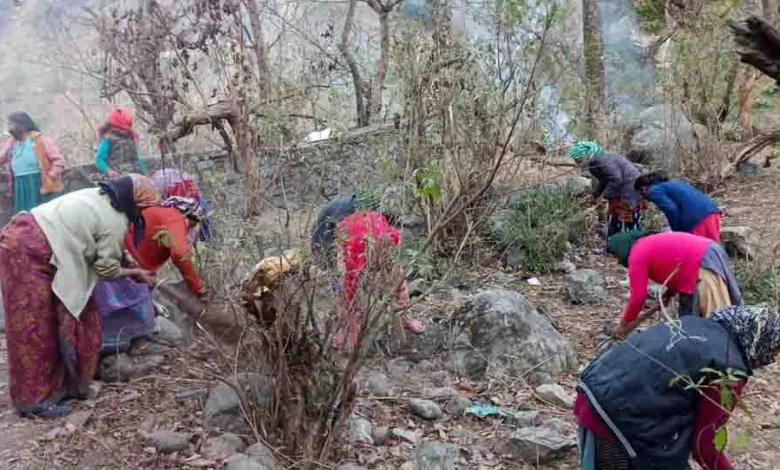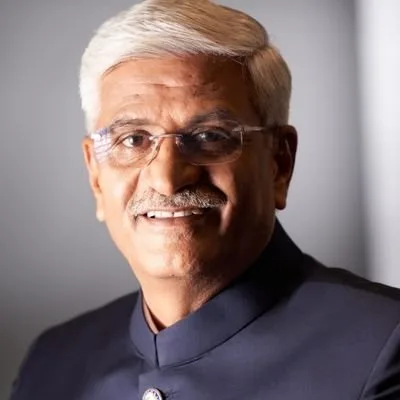GUEST COLUMN : Swachhata Hi Seva Pakhwada’: a Jan-Andolan for garbage-free India

The SHS campaign has acted as a catalyst in enabling public participation towards a cleaner, healthier and more sustainable India
 Gajendra Singh Shekhawat
Gajendra Singh Shekhawat
India, a country of remarkable diversity and stark contrasts, finds strength in its unity, especially in times of adversity. The Swachh Bharat Abhiyan, (Clean India Campaign) a flagship initiative led by Prime Minister Narendra Modi, stands as a shining example of what collective willpower can achieve in our country. The Swachh Bharat Mission (SBM-G) is a jan-andolan (mass movement) for a cleaner, healthier and more sustainable India. However, this campaign is not merely about immediate action. It lays the foundation for a long-term vision, addressing waste management in both urban and rural areas, which has been made possible through the joint action of various departments across the government.
To give impetus to this cause, my entire team has been tirelessly working every day towards this mission, through regular state visits and high level reviews to ensure effective implementation of the vision of the Prime Minister Narendra Modi. It is because of this resolve that we have achieved over 4.4 lakh ODF Plus villages under SBM-G 2.0 along with constructing more than 11.25 crore household toilets and 2.36 lakh community sanitary complexes. A pivotal component of this initiative is the Swachhata Hi Seva (SHS) (Cleanliness is Service) campaign which enables jan-bhagidari (mass participation) towards this mission. We have already witnessed the profound impact of Swachhata Hi Seva in the year 2022. Around 10 crore people did Shramdaan activities during SHS 2022 and already around nine crore people have done Shramdaan activities so far. SHS this year has seen more than 20 crore people participating in various activities so far in 12 days – averaging around 1.67 crore people participation per day. It is because of this huge people participation that we saw the nation achieving a remarkable milestone this year, going from seven per cent to to 75 per cent Open Defecation Free Plus villages.
This year, the SHS campaign was launched by my cabinet colleagues Union Minister of Panchayati Raj and Rural Development Giriraj Singh, Union Minister of Housing and Urban Affairs Hardeep Singh Puri and myself. The fortnight long campaign is being observed this year from September 15 to October 1, culminating in a nationwide Swachata Shramdaan of one hour on October 1, from 10 AM to 11 AM, on the call of our Prime Minister. This year, the campaign is being run as a joint initiative of the Department of Drinking Water and Sanitation and Ministry of Housing and Urban Affairs through the Swachh Bharat Mission– Grameen (Rural) and Urban.
Swachhata Hi Seva is no ordinary campaign. It is a call to citizens to actively engage in shramdaan through voluntary activities aimed at fostering a sense of shared responsibility and to reinforce the message that sanitation is everybody’s business. This year, under the banner of ‘Garbage Free India,’ the campaign aims to emphasise that sanitation is a collective duty and cleanliness should be an intrinsic part of our daily lives. As we reflect upon the success of the Swachhata Hi Seva campaign, it is essential for us to delve deeper into the nuanced aspects of this extraordinary endeavour. At the heart of the campaign is an unwavering emphasis on visual cleanliness, extending to the welfare of Safai Mitras, often unsung heroes in our society. Recognising their vital role is a commendable aspect of the campaign, underlining the need to uplift those who diligently maintain our surroundings.
SHS-2023 showcases an impressive array of activities, ranging from cleaning high-traffic public spaces to refurbishing sanitation assets, with the aim of rejuvenating public areas. Additionally, the cleaning of riverbanks, water bodies, tourist destinations, and historical monuments highlights our commitment to preserving our natural and cultural heritage. The collaboration between the Department of Drinking Water and Sanitation and the Ministry of Housing and Urban Affairs sets the stage for a robust waste management mechanism in line with this vision.
At this juncture, it is also important to recognise the ‘Whole of Government’ approach adopted under SHS-2023. This innovative approach has enabled 59 government departments, apart from DDWS and MoHUA, to initiate over 30,000 activities and ensuring the participation of over 7.5 lakh people so far to promote Swachhata (cleanliness) all over the country. Further, the most significant achievement of the campaign is the unprecedented mobilisation of communities. People from all walks of life, including students, government employees and local communities unite to address a common cause. Young minds embrace the importance of waste segregation at its source, evolving into champions of cleanliness in their communities. Cultural events and special programmes transcend regional boundaries, fostering a collective sense of purpose.
The campaign also marks the launch of the SHS portal for this year, which meticulously records voluntary work under this initiative. This introduces a level of transparency and accountability previously unseen in such campaigns, offering a tangible method to quantify the outstanding efforts of participating citizens and organisations. Concurrently, the Indian Swachhata League, integrated into SHS-2023, injects a competitive spirit into the campaign. I would like to request all my fellow citizens to imbibe the spirit of Shramdaan, learn from the teachings of the father of our nation and actively participate in the Swachata Shramdaan on October 1 and contribute in their own way to making our villages, towns and cities ‘Sampoorna Swachh’.
(The author is minister for Jal Shakti, Government of India. Views expressed are personal)






